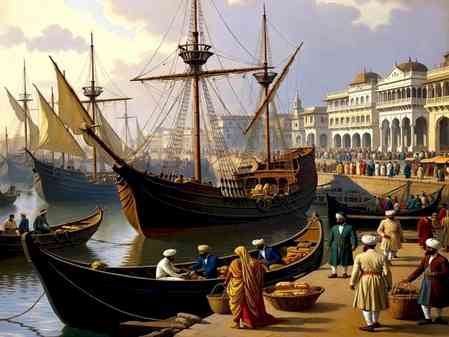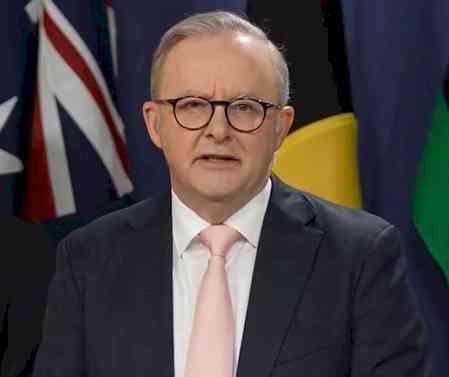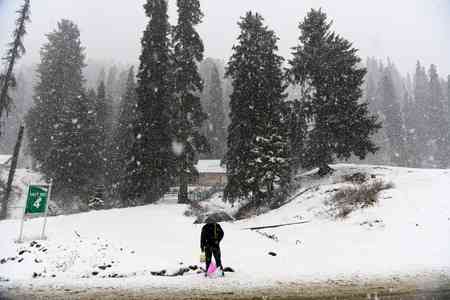Driving Sustainable Logistics Along with National Waterways
Imagine a future India where goods glide on barges instead of trucks, logistics corridors slide along rivers instead of highways, and the carbon footprint shrinks even as trade expands. That future is not fantasy—it is within reach. For India to be Viksit Bharat and truly Atmanirbhar, Inland Water Transport (IWT) has to be the backbone of a sustainable logistics revolution.

By Vijay Kumar
Imagine a future India where goods glide on barges instead of trucks, logistics corridors slide along rivers instead of highways, and the carbon footprint shrinks even as trade expands. That future is not fantasy—it is within reach. For India to be Viksit Bharat and truly Atmanirbhar, Inland Water Transport (IWT) has to be the backbone of a sustainable logistics revolution.
Rivers have carried India’s trade for 4,000 years. They connected Lothal to Rome, Bengal to Burma, and Assam to the rest of Southeast Asia. However, roads and railways, with their glitter of speed and steel, pushed rivers into the background. Today, in an age of climate warnings and economic pressures, the tide is turning. Not out of romance, but out of necessity.
Under Prime Minister Narendra Modi’s leadership, inland waterways have received unprecedented policy focus. Cargo movement on National Waterways has climbed from 18.1 million metric tonnes in 2013-14 to 145.84 million metric tonnes in 2024-25. Operating costs confirm the logic: ₹1.20 per tonne-km by water, compared to ₹1.40 by rail & ₹2.28 by road. Waterways are economical and fuel-efficient. Waterways consume just 0.0048 litres per tonne-km, against 0.0313 litres by road, & 0.0089 litres by rail. This is an eye opener for any supply chain management.
And here’s the real clincher: greenhouse gas emissions per tonne-km on rivers are just a fifth of what roads produce. Every barge sailing down the Ganga or Brahmaputra is not only carrying goods but also cleaning up India’s carbon conscience.
The Jal Marg Vikas Project on NW-1 approved by Government of India in 2016, is shifting cargo flows in the Ganga-Bhagirathi-Hooghly river system. Multimodal logistics hubs like Varanasi and Sahibganj are being developed in partnership with National Highways Logistics Management Ltd (NHLML), while rail linkages via Indian Port Rail & Ropeway Corporation Ltd. (IPRCL) and Dedicated Freight Corridor Corporation of India Ltd. (DFCCIL) are being built to integrate river, rail and road seamlessly. On NW-2 (the river Brahmaputra), the Jogighopa IWT terminal is being tied to the Multi-Modal Logistics Park (MMLP), which connects via the Indo-Bangladesh Protocol route to Kolkata and Haldia ports.
The potential of IWT is already visible in action. Take the Numaligarh Refinery Limited (NRL) expansion project in Assam, recently inaugurated by the Prime Minister. Heavy equipment for the refinery—including Over Dimensional Cargo (ODC) and Over Weight Cargo (OWC)—was transported via the Indo Bangladesh Protocol (IBP) Route & Brahmaputra river under IWAI’s supervision. This included 24 consignments moving efficiently and safely to the NRL jetty, bypassing congested highways and avoiding the complications of road transport for oversized cargo. The operation showcased how river logistics is not just environmentally prudent but fully capable of handling India’s most challenging industrial shipments, combining cost-effectiveness, safety, and sustainability.
Of course, for industry, this is not about nostalgia or national pride. It’s about margins and markets. Moving freight on water is cheaper, cleaner and increasingly faster as multimodal hubs come online. In a world where global investors assess supply chains not just for efficiency but also for their environmental impact, shifting to river transport offers a strategic advantage. Carbon compliance has become a key factor, making inland waterways a smarter and more sustainable choice for modern logistics. Move freight on water, and you reap the dual dividends of lower costs and better Environment, Social and Governance (ESG) credentials.
The social dividend is real. Fewer trucks means fewer accidents, lower road maintenance pressure, cleaner air, and more resilient rural economies. Many riverine communities once reliant on ferry transport or small-scale trade can find renewed purpose in logistics support, handling, warehousing, and inland port services. This is not charity. This is commerce rediscovering common sense.
Yes, challenges remain. Seasonality affects navigability. Some stretches require constant dredging. Vessel fleets are limited. Institutional coordination across States, Ports, and Ministries is a puzzle. But the Government is tackling these head-on—through end-to-end dredging, expanding multi-modal hubs, putting in place policy instruments like the Inland Vessels Act, enabling private jetties on National Waterways, & more compliant with environmental norms under ‘Harit Nauka’ to nudge the sector towards cleaner, greener practices. Digital tools like CAR-D (Cargo Data Portal), Jalyan & Navic, Jal Samriddhi, PANI, Naudarshika (National River Traffic and Navigation System) portals and vessel tracking systems streamline operations and reduce friction.
Globally, the template is clear. The Danube and Rhine carry Europe’s freight. India, with its rich network of more navigable rivers, is uniquely positioned. As India seriously contemplates to become net-zero by 2070, waterways are not optional. They are central. They tick every box: efficiency, economy, and ecology. The numbers add up, the climate case is unassailable, and the cultural logic is undeniable.
At India Maritime Week 2025 in Mumbai in October, 2025, the Policymakers — both global & local, Logistics majors — bigwigs to aspiring ones, Governments, Investors, Maritime experts, Environmentalists and Enthusiasts would present their ideas to give shape to next logical steps towards this direction. It would showcase the future of cargo-centric river transport—how the Ganga, Brahmaputra, and other waterways can be the skeleton of a greener, more efficient India. Rivers built our civilization. By embracing our rich legacy and integrating global best practices, India is poised to build a sustainable economy through a revitalized and modernized inland water transport system. With momentum on our side, the current is finally flowing in our favour—powering the future of green logistics.
(The author is Secretary, Ministry of Ports, Shipping and Waterways)


 City Air News
City Air News 









